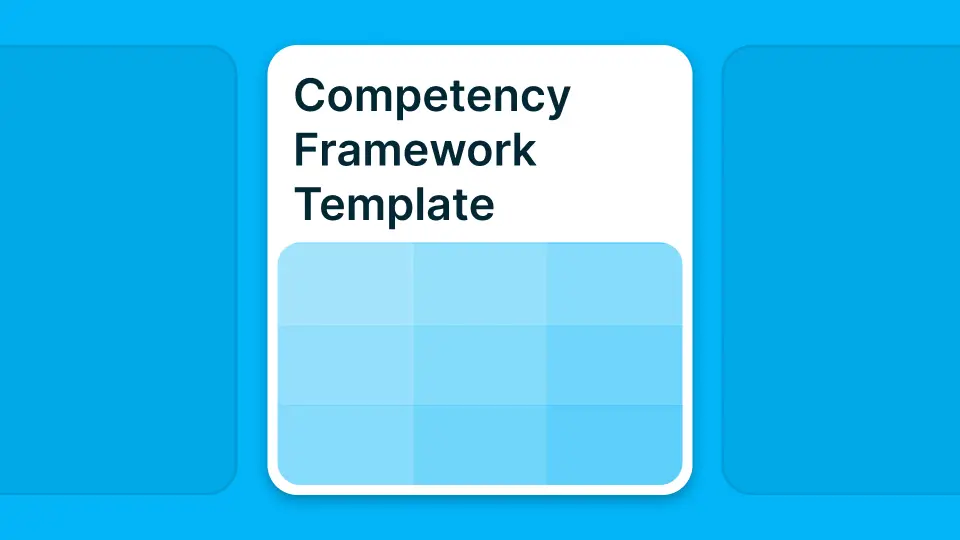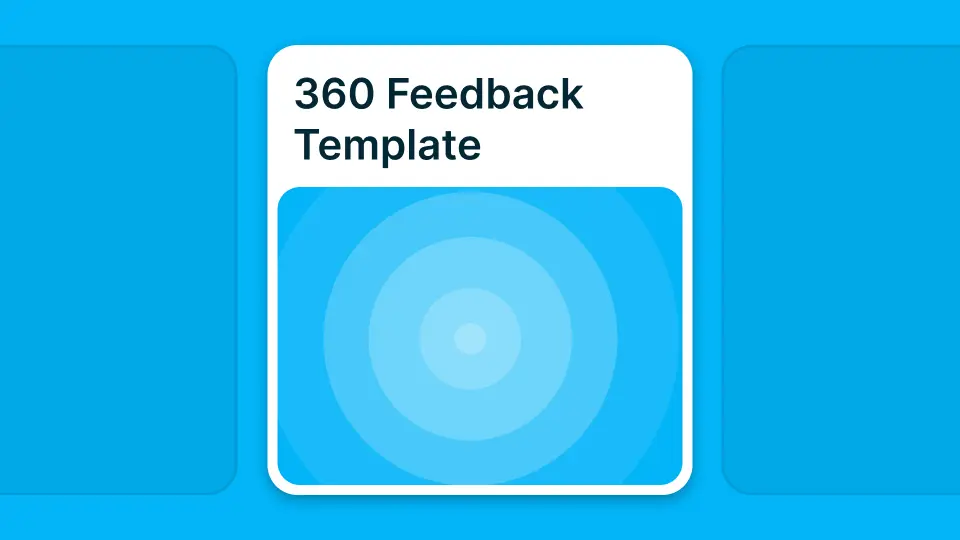Did you know that over 60% of employees believe promotion decisions at their company are inconsistent or biased? According to Harvard Business Review, this perception of unfairness ranks among the top drivers of employee turnover. If you've ever struggled to make fair, well-documented promotion decisions, you're not alone.
This guide delivers a complete, ready-to-use promotion committee template pack—including scorecards, rubrics, and decision logs—so your team can run transparent, bias-resistant processes every cycle. You'll get practical downloads and proven methods to boost trust, streamline documentation, and meet global best practices. Whether you're launching a promotion committee from scratch or revamping an existing one, these templates will transform subjective debates into defensible, auditable decisions.
Here's what you'll find inside:
- Downloadable templates for every step—from charters to communications
- A step-by-step process framework ensuring fairness and compliance
- Built-in bias mitigation prompts and DEI checkpoint tools
- Guidance on GDPR requirements, audit trails, and governance structures
- Real-world examples showing how structured committees reduce disputes
Ready to transform how your promotion committee works? Let's dive into the essential building blocks for a robust, defensible process that earns employee trust and stands up to scrutiny.
1. Building Your Promotion Committee: Charter & Rules of Engagement
A clear committee charter sets the foundation for credibility and consistency in promotions. Defining roles, responsibilities, and engagement rules is non-negotiable for trust. Think of your charter as the constitution for promotion decisions—it outlines who participates, how decisions get made, and what happens when disagreements arise.
Studies from SHRM show structured committees reduce perceived bias by up to 40%. Yet according to Gartner research, only 27% of companies have formalized committee charters. This gap represents a massive opportunity for organizations serious about fair advancement.
A global SaaS firm revamped its promotion process with a written charter defining membership criteria, term limits, and conflict-of-interest protocols. Within six months, employee trust scores rose by 18% while promotion-related disputes dropped significantly. The key? Everyone knew exactly how decisions would be made before the cycle even started.
Your promotion committee template should include these core elements:
- Draft a committee charter outlining purpose, scope, and membership criteria with specific role requirements
- Set term limits and rotation schedules to avoid groupthink and bring fresh perspectives regularly
- Define rules of engagement covering quorum requirements, voting thresholds, and confidentiality protocols
- Use role-specific checklists differentiating responsibilities for chairs versus members
- Document conflicts-of-interest protocols requiring written disclosure before deliberations
| Charter Element | Best Practice Example | Risk If Missing |
|---|---|---|
| Membership Criteria | Diverse functions/levels represented | Homogeneity leads to blind spots |
| Term Limits | Annual rotation with overlap | Stagnation and entrenched bias |
| Conflict Policy | Written disclosure required upfront | Undisclosed bias taints decisions |
| Voting Threshold | Simple majority with tie-break protocol | Deadlock with no resolution path |
Tools like Google Docs work well for versioning your charter—everyone can see who made changes and when. For signature collection and formal acknowledgment, platforms like DocuSign ensure accountability. Store your charter centrally where all stakeholders can reference it throughout the promotion cycle.
Once your committee structure is set, it's time to clarify who gets nominated—and establish transparent pathways into the process.
2. Eligibility & Nominations: Setting Fair Entry Points
Transparent eligibility criteria and nomination workflows prevent confusion and favoritism from day one. When employees understand exactly what qualifies them for consideration, they can prepare appropriately and managers can nominate objectively.
LinkedIn research found that unclear promotion requirements are a top driver of disengagement among high performers. Meanwhile, 58% of HR leaders in a Mercer survey say unclear nomination processes cause disputes that could have been avoided with better documentation.
A fintech startup introduced a public eligibility matrix specifying tenure requirements, role expectations, and impact thresholds. They also standardized their nomination forms to require manager justification with supporting evidence. Within one cycle, nomination disputes dropped by half—and employees reported feeling more confident about their advancement opportunities.
Your promotion committee template should establish these nomination standards:
- Publish eligibility requirements company-wide covering minimum tenure, role prerequisites, and demonstrated impact
- Standardize nomination forms with mandatory fields—no more off-the-record requests or hallway conversations
- Require manager justification with specific supporting evidence tied to performance data
- Set fixed nomination windows per cycle so everyone knows when opportunities open
- Track all nominations centrally in a secure system for complete auditability
| Nominee Criteria | Required Evidence | Nomination Window |
|---|---|---|
| Minimum tenure: 12 months in role | Last two performance reviews | Q2 and Q4 only |
| Demonstrated leadership impact | Peer endorsements from cross-functional teams | March–April cycle |
| Key project ownership | OKR achievement logs with business outcomes | October–November cycle |
| Values alignment documented | 360-degree feedback summary | Both cycles |
Digital forms with mandatory fields prevent incomplete submissions that waste committee time. Build simple validation rules—if a manager tries to nominate someone with 10 months tenure when 12 is required, the form flags it immediately. This automation saves hours of back-and-forth and ensures every candidate packet meets baseline standards.
Consider creating different eligibility tracks for individual contributors versus managers. A senior engineer moving to principal needs different evidence than a team lead stepping into director responsibilities. Your promotion rubric template should reflect these distinctions clearly.
With candidates identified fairly through transparent criteria, the next challenge is gathering—and evaluating—the right evidence to support sound decisions.
3. Evidence Collection & Calibration: Making Decisions Data-Driven
Robust evidence collection underpins unbiased evaluations while calibration meetings align standards across managers. Without structured evidence requirements, committees rely too heavily on whoever tells the most compelling story—rather than who demonstrates the strongest performance.
McKinsey reports companies using structured evidence improve promotion accuracy by 32%. Yet only 35% of organizations regularly calibrate promotion data before decisions, according to Deloitte research. This means most companies make advancement calls without ensuring consistency in how evidence gets interpreted.
A regional bank adopted joint calibration sessions using BARS scorecards to evaluate candidates across branches. Previously, each branch manager operated with their own implicit standards—"exceeds expectations" meant something different in retail versus commercial banking. After implementing shared rubrics and quarterly calibration, cross-department alignment improved measurably and internal mobility increased.
Your evidence-based promotion process needs these components:
- Standardize candidate packets including recent reviews, OKR results, peer feedback summaries, and key project outcomes
- Use BARS-style rubrics for scoring core competencies like impact, collaboration, and leadership with behavioral anchors
- Run cross-functional calibration meetings before voting so managers align on what "strong" looks like
- Assign devil's advocate roles to surface blind spots and challenge assumptions about high-profile candidates
- Log all evidence sources in a centralized tracker maintaining version control and access audit trails
| Evidence Type | Source System | Reviewer Evaluation Notes |
|---|---|---|
| Performance Reviews | HR platform historical data | Consistently exceeds targets across three cycles |
| Peer Feedback | Anonymous 360 survey results | Strong collaboration scores from diverse stakeholders |
| OKR Results | Goals platform export with timeline | Stretch goals met ahead of schedule with business impact |
| 1:1 Meeting Notes | Manager documentation summaries | Clear growth trajectory and skill development documented |
Calibration meetings work best when you bring together managers from different functions who don't directly compete for the same promotion slots. A head of engineering and a head of marketing can challenge each other's assumptions more freely than two engineering directors vying for limited senior slots.
During calibration, use your promotion committee scorecard to rate candidates against the same competencies. When one manager rates collaboration as "exceeds" and another rates it "meets" for similar behaviors, that's your cue to dig deeper and align standards. These discussions are where implicit bias often surfaces—and where structured rubrics help you correct course.
Next comes the heart of fairness—how your committee scores candidates and documents rationales transparently using objective criteria everyone understands.
4. Scorecards & Rubrics: Structuring Fair Evaluations
Objective rubrics—especially those using BARS (Behaviorally Anchored Rating Scales)—minimize subjectivity and document the "why" behind each decision. Without them, promotion discussions devolve into opinion battles where charisma often trumps competence.
Harvard Business School research found BARS reduces inter-rater disagreement by up to 50%. When multiple evaluators use the same behavioral anchors, their scores converge around consistent interpretations. Companies applying BARS saw appeals drop by a third after implementation, according to internal case studies across several Fortune 500 firms.
A multinational retailer piloted role-specific rubrics for store manager promotions. Previously, regional directors had wildly different standards for what made someone "ready" for district manager responsibilities. After introducing a promotion rubric template with clear behavioral anchors for each competency level, managers reported clearer expectations and post-promotion complaints fell significantly.
Your promotion committee template should include these scorecard elements:
- Design role-relevant scorecards with core competencies covering impact/ownership, scope/complexity, collaboration/leadership, and values/behaviors
- Define behavioral anchors for each rating level—not just numbers but concrete examples of what "meets" versus "exceeds" looks like
- Provide specific examples showing what falls short, meets expectations, and exceeds standards for each competency
- Train all raters on consistent application before any evaluation cycle begins—practice with sample cases
- Record all final scores with mandatory rationale comments explaining the rating choice
| Competency | Behavioral Anchor Example | Rating Scale |
|---|---|---|
| Collaboration | Leads cross-team projects proactively, resolves conflicts constructively | Exceeds / Meets / Falls Short |
| Impact & Ownership | Delivers measurable business results beyond role scope, takes initiative | Exceeds / Meets / Falls Short |
| Scope & Complexity | Handles ambiguous problems affecting multiple teams or business units | Exceeds / Meets / Falls Short |
| Values & Behaviors | Champions company values in tough situations, models desired culture | Exceeds / Meets / Falls Short |
The power of BARS comes from specificity. Instead of rating someone's "leadership" on a 1-5 scale with no context, your rubric might say: "Exceeds: Proactively mentors three or more junior team members, documented impact on their career progression." That's something evaluators can verify with evidence rather than gut feeling.
For individual contributor tracks, adjust competencies to emphasize technical depth and influence without direct reports. A principal engineer promotion rubric should weight system design impact and cross-team technical leadership differently than a director of engineering rubric focused on people management.
Build separate scorecards for different role families—your promotion committee template pack should include variations for IC technical tracks, people management tracks, and specialized functions like sales or operations. One-size-fits-all rubrics miss crucial role-specific competencies that matter for success.
Evaluations are only as strong as their documentation—let's see how decision logs lock in accountability and create defensible audit trails.
5. Decision Logs & Rationales: Creating an Audit Trail
Documenting every decision alongside rationale protects against appeals and regulatory scrutiny while building internal trust. When someone asks "why wasn't I promoted?" you need more than "the committee decided" as your answer.
EY research found that organizations maintaining promotion decision logs had up to 70% fewer legal disputes over advancement claims. Meanwhile, 82% of HR professionals in a People Management Survey say lack of rationale documentation is their top regret after contentious promotions. The pattern is clear: invest in documentation upfront or pay for it later in appeals and damaged credibility.
A biotech firm launched a decision log template with mandatory rationale tracking linked to their scorecard categories. Previously, committee members would vote without recording their reasoning—when an employee appealed or a Works Council raised questions, no one could reconstruct the decision basis months later. After implementing structured logs, Works Council challenges fell sharply within two years because every verdict could be traced back to specific evidence and evaluation criteria.
Your decision log template must capture these elements:
- Use standardized decision logs capturing vote counts plus comments per candidate with timestamps
- Require explicit rationale entries linked to specific rubric categories and supporting evidence
- Include dissenting opinions when relevant—transparency about disagreements builds credibility rather than hiding them
- Store logs securely with version control and GDPR compliance including access restrictions and retention policies
- Schedule periodic audits of past cycles for pattern detection around demographics, departments, or role types
| Candidate Name | Vote Result | Rationale Summary | Next Review Date |
|---|---|---|---|
| Jane Smith | Approved (5-1) | Strong leadership growth over three quarters, exceeded scope expectations | N/A - promoted |
| Marco Lee | Declined (2-4) | Scope/complexity scores below promotion threshold, development plan created | Next cycle Q4 |
| Priya Patel | Tied (3-3) | Tie-break protocol invoked, committee chair final vote approved based on impact data | N/A - promoted |
| Chen Wei | Deferred (6-0) | Strong performance but insufficient tenure, revisit in 6 months with updated evidence | Q2 next year |
Your rationale entries should reference specific evidence sources: "Approved based on collaboration scores (8/10 peer feedback), impact demonstrated in Q3 product launch (15% revenue increase), and consistent exceeds ratings in last two performance reviews." This level of detail makes appeals straightforward to address—either the evidence supports the decision or it doesn't.
When someone gets declined, your log should include developmental feedback: "Collaboration scores need improvement—recommend cross-functional project leadership in next quarter." This transforms disappointment into actionable growth paths, which reduces resentment and maintains engagement.
Store your decision logs with appropriate access controls. Committee members and HR need full access; hiring managers might see results for their nominees only; individual employees should be able to request their own records under GDPR subject access rights. Build these permission structures into your system from day one.
Even the best templates need regular checks—for fairness, DEI alignment, and proactive bias mitigation at every process stage.
6. Bias Mitigation & DEI Checks: Ensuring Equity Every Step
Bias mitigation prompts and DEI checks aren't just add-ons—they're built into every template stage for sustainable fairness. Without explicit intervention, unconscious bias creeps into even the most well-intentioned promotion committees.
CIPD research shows that explicit anti-bias steps reduce adverse impact risk by up to 60%. Yet just 22% of firms embed DEI checks into their promotion process today according to industry surveys—a huge opportunity gap for organizations serious about equitable advancement.
An international tech scale-up implemented bias mitigation checklists at every meeting stage of their promotion cycle. Before discussions began, the committee chair would ask: "Has everyone declared potential conflicts of interest? Are we evaluating based on documented evidence or impressions?" These simple prompts changed the tone immediately. Gender balance among promotions improved from 28% to 43% female representation within three cycles—not through quotas but through more rigorous evaluation standards applied consistently.
Your bias mitigation checklist should include these interventions:
- Embed bias mitigation prompts directly into scorecards asking "Have all reviewers declared conflicts? Are we weighing similar evidence equally?"
- Add DEI checkpoints at key process gates—especially during calibration meetings before final votes
- Run anonymized data audits post-cycle analyzing promotion rates by gender, ethnicity, tenure, and department
- Rotate committee membership annually bringing fresh perspectives and reducing entrenchment of implicit standards
- Offer refresher training on unconscious bias pre-cycle with real examples from your organization's past decisions
| Process Stage | Bias Check Action | Outcome Measured |
|---|---|---|
| Nomination | Anonymize candidate names during initial eligibility review | Reduced affinity bias in screening phase |
| Calibration | Present diversity dashboard before discussions begin | Increased awareness of demographic patterns |
| Final Vote | Bias prompt before voting: "Are we applying consistent standards?" | Fewer snap judgments based on familiarity |
| Post-Cycle | Audit promotion rates across demographics with HR analytics | Pattern detection enables process improvements |
One powerful technique: blind calibration for the first round. Share candidate packets with performance data and evidence but remove names, photos, and demographic identifiers. Committee members rate competencies based purely on documented achievements. Then reveal identities and discuss any rating changes—those shifts often reveal where bias influences judgment.
Your promotion committee template should include a DEI impact assessment tool. After each cycle, compare promotion rates across different groups. If one department promotes 45% of nominees while another promotes only 12%, dig into the root causes. Are standards inconsistent? Is one manager better at developing talent? Are implicit biases affecting certain groups?
Document these audits in your decision log system. When a Works Council or diversity committee asks about equity in promotions, you'll have data-driven answers rather than defensive reactions. Transparency about challenges builds more credibility than claiming perfection.
With fairness locked in at every turn, it's vital to keep your system agile—with clear governance, transparent appeal routes, and continuous improvement mechanisms.
7. Governance & Continuous Improvement: Appeals, Cycles & Version Control
Effective governance means documented cycles, transparent appeal routes, version tracking—and systematic learning from each promotion round. Your promotion governance framework should evolve with your organization rather than calcifying into bureaucracy.
Only half of organizations regularly update their promotion frameworks post-cycle review, according to Josh Bersin Academy research. Just 30% offer formal appeal processes—but those that do see measurably higher employee confidence scores. When employees know they have recourse if something goes wrong, they trust the overall system more even if they don't use the appeal option.
An e-commerce platform introduced annual framework reviews with input from promoted employees, declined candidates, and committee members. They also established an appeals panel independent from the original committee. Post-promotion satisfaction rose from 62% to 84% within 18 months. The key insight? People want to know the system can correct mistakes—even if most decisions stand after review.
Your promotion committee template pack should establish these governance structures:
- Define clear cadence for promotion cycles—quarterly or biannual depending on organization size and growth rate
- Institute formal appeal procedures accessible to all employees with defined timelines and neutral reviewers
- Keep detailed version history on all templates and process documents using collaborative tools with change tracking
- Conduct end-of-cycle retrospectives involving diverse voices including HR, committee members, and employee representatives
- Share anonymized trend data with stakeholders after each cycle showing promotion rates, appeal outcomes, and process improvements
| Governance Element | Best Practice Implementation | Improvement Noted |
|---|---|---|
| Appeal Process | Written policy with neutral 3-person panel review within 15 business days | Higher trust scores in engagement surveys |
| Version Tracking | Google Docs with revision history and change summaries per cycle | Fewer errors and confusion about current standards |
| Cycle Retrospective | 90-minute facilitated session with committee + HR + employee reps | Clearer improvements implemented each cycle |
| Data Transparency | Anonymous promotion rate dashboards shared quarterly | Increased confidence in process fairness |
Your appeal process should balance accessibility with protection against frivolous challenges. A reasonable standard: employees can appeal within 10 business days of notification, must cite specific procedural concerns or evidence errors, and receive a response within 15 business days. Appeals get reviewed by a different panel than the original committee—ideally including one HR representative and two senior leaders uninvolved in the original decision.
Version control matters more than you'd think. When a declined candidate appeals claiming the standards weren't clear, you need to show exactly which version of the rubric was active during their evaluation period. Store dated copies of all templates, charters, and eligibility criteria. If you update your promotion rubric mid-year, clearly communicate whether the new version applies to in-flight nominations or only future cycles.
Conduct retrospectives with psychological safety—committee members should feel comfortable admitting what didn't work. Questions to ask: Where did our rubric fail to differentiate candidates clearly? Which evidence sources proved most valuable? Did any bias checks catch real problems? What would make next cycle 20% better?
Share aggregate data openly: "This cycle we evaluated 47 candidates, promoted 22 (47% conversion rate), received 3 appeals (1 upheld), and identified two process improvements for next quarter." This transparency demonstrates continuous improvement and builds confidence that the system responds to feedback.
Ready-made templates are just the start—the real power comes from treating your promotion process as a living system that learns and adapts with your organization's growth.
Conclusion: Structured Promotion Committees Deliver Lasting Fairness
Objective templates transform subjective debates into defensible decisions that employees can trust and organizations can stand behind. When over 60% of workers question promotion fairness, structured systems aren't nice-to-have—they're essential for retention and credibility.
Three critical takeaways from this framework:
- Documentation beats intention every time—bias mitigation checklists, BARS scorecards, and decision logs create accountability that good intentions alone never achieve
- Continuous improvement separates effective committees from bureaucratic theater—retrospectives and appeals processes prove your system can learn and correct course when needed
- Evidence-based evaluation with calibration meetings ensures consistency across managers and departments, reducing disputes while improving internal mobility outcomes
For your HR team, concrete next steps look like this: Download the complete promotion committee template pack including charters, scorecards, decision logs, and communications templates. Schedule a kickoff meeting with key stakeholders—committee members, senior leaders, and employee representatives—to align on your new process before the next promotion cycle opens. Most importantly, commit to quarterly retrospectives where you examine what worked, what fell short, and how your framework needs to evolve.
The future of promotion governance is clear. As teams become more distributed globally and expectations around transparency continue rising, structured frameworks will be non-negotiable for earning employee trust and staying compliant with evolving regulations. Organizations that master fair, auditable promotion processes today will have significant competitive advantages in attracting and retaining top talent tomorrow. The companies that wing it with informal discussions and implicit standards? They'll struggle to explain their decisions when challenged—and pay the price in turnover and legal exposure.
Start with one template from this guide—perhaps the committee charter or the BARS scorecard—and pilot it in your next cycle. Gather feedback, refine your approach, then expand to the full framework. Sustainable change happens through iteration, not overnight transformation. Your promotion committee doesn't need to be perfect from day one—it needs to be better than last cycle, with a clear plan for continuous improvement.
Frequently Asked Questions (FAQ)
What is a promotion committee template?
A promotion committee template is a set of ready-made documents including charters, scorecards, rubrics, and decision logs that helps HR teams manage fair and consistent advancement processes across roles or departments. These templates standardize how you evaluate candidates, document decisions, and maintain audit trails for compliance. Instead of reinventing the process each cycle, you use proven frameworks that reduce bias and increase transparency. The best templates include behavioral anchors for rating scales, conflict-of-interest protocols, and built-in DEI checkpoints to ensure equity throughout the evaluation process.
Who should participate in a promotion committee?
Promotion committees typically include senior leaders from relevant departments plus an HR representative to ensure process compliance and fairness. Effective committees bring diversity in function, seniority, and experience to reduce blind spots and challenge assumptions. For a 200-person company, a 5-7 person committee works well; larger organizations might segment by division or role family with rotating membership. Avoid stacking committees with only executives from one function—an engineering-heavy committee evaluating a sales promotion introduces bias. Include people who understand the target role's requirements but aren't competing for the same limited slots.
How does the committee make final decisions?
Committees use standardized rubrics or scorecards during calibration meetings to evaluate candidates against objective competencies like impact, collaboration, and scope complexity. Each member reviews candidate packets containing performance data, peer feedback, and achievement evidence before meetings. During deliberations, members share ratings and discuss discrepancies until alignment emerges on whether someone meets promotion standards. Final votes are recorded alongside detailed rationales in official decision logs so every verdict can be traced back to specific evidence if questioned later. Most committees use simple majority voting with documented tie-break protocols when needed.
What kind of evidence should be collected for candidate review?
Best practice includes recent performance reviews from the past 12-18 months, peer feedback summaries from 360-degree surveys, completed OKR results showing business impact, and documentation from 1:1 meetings demonstrating skill development over time. All evidence should be submitted via a standardized candidate packet checklist to ensure consistency—some committees require at least three distinct evidence sources per competency being evaluated. Quantitative data like revenue impact, project delivery timelines, or customer satisfaction scores add objectivity. The strongest candidate packets show patterns of sustained performance rather than one-off achievements, with clear progression toward next-level responsibilities.
Why is documentation so important in promotions?
Thorough documentation protects both employees and employers from misunderstandings, bias claims, or legal challenges by creating an audit trail showing each decision was made fairly using objective criteria. When someone appeals a promotion outcome or a regulatory body questions your advancement practices, detailed decision logs with linked evidence and rationales provide defensible answers. Documentation also enables continuous improvement—you can analyze patterns across cycles to spot where bias creeps in or which evaluation criteria predict success best. Under GDPR and similar regulations, employees have the right to understand how decisions affecting them were made, which requires complete records. Organizations with strong documentation see up to 70% fewer promotion-related disputes according to research from professional services firms.












